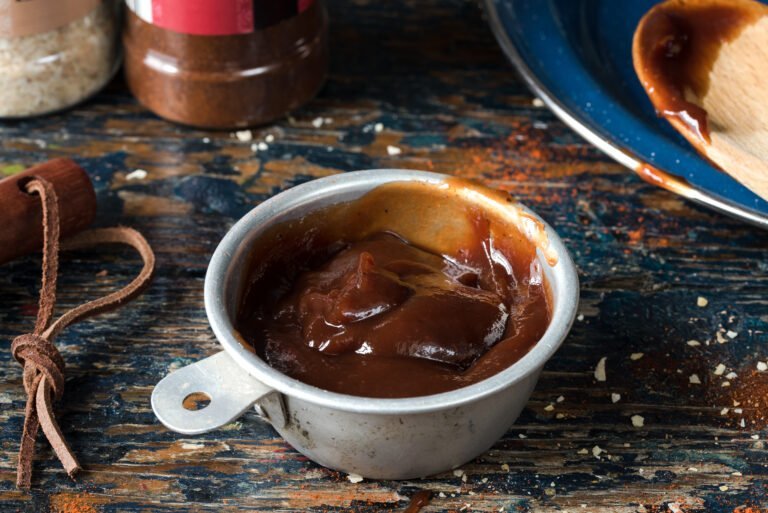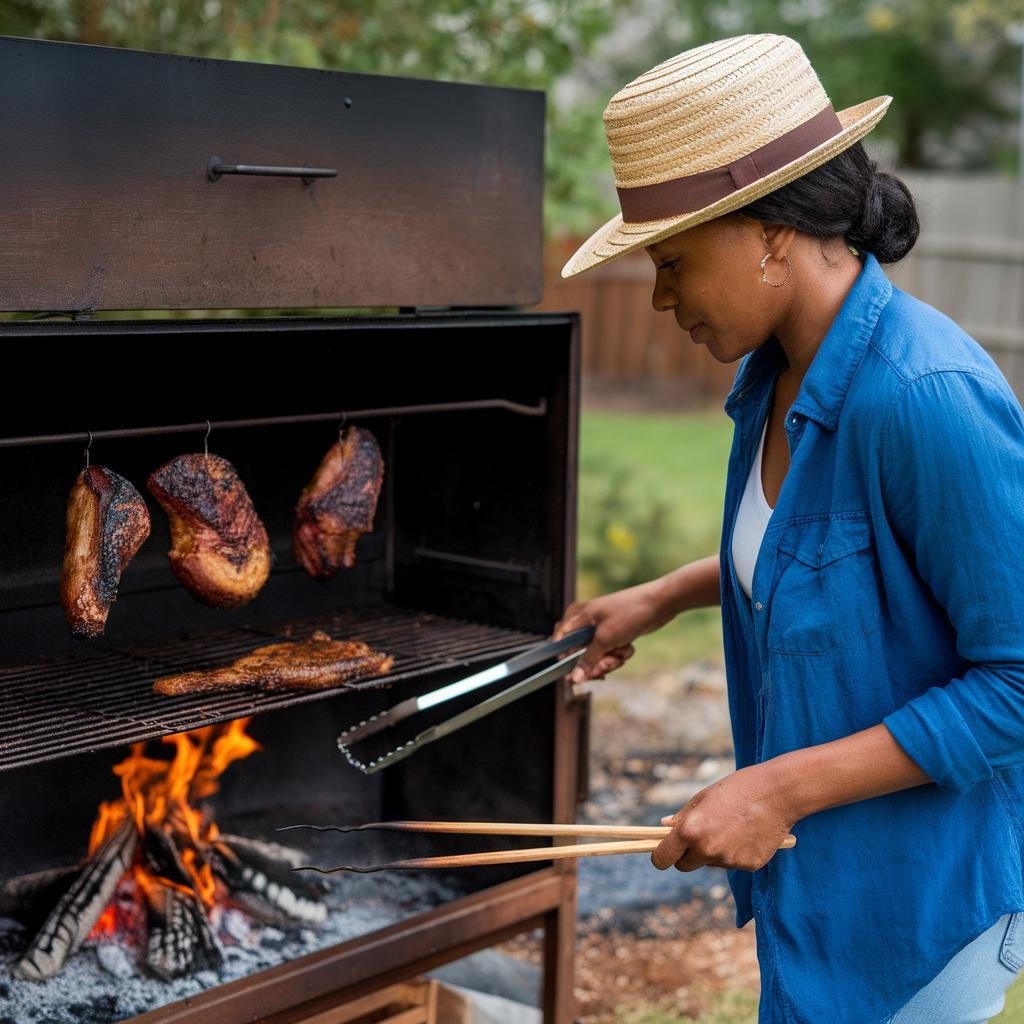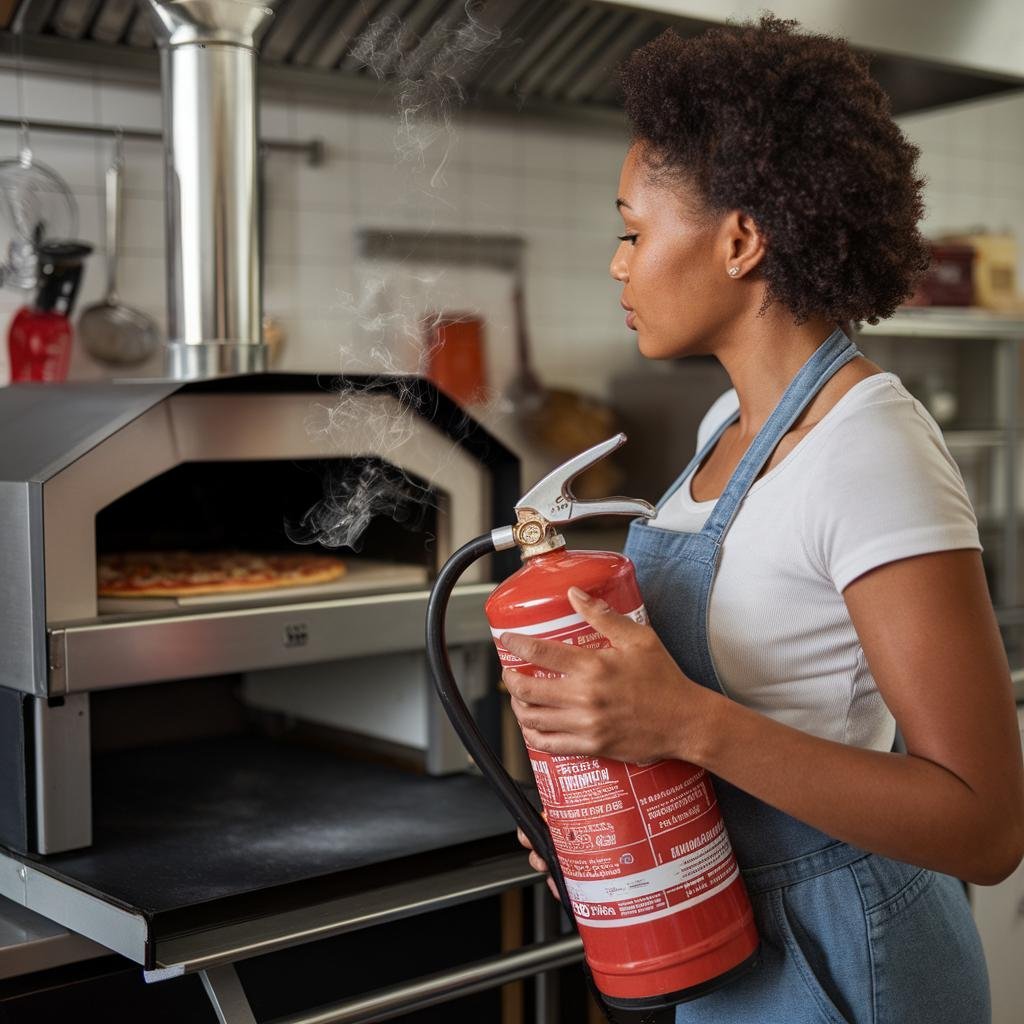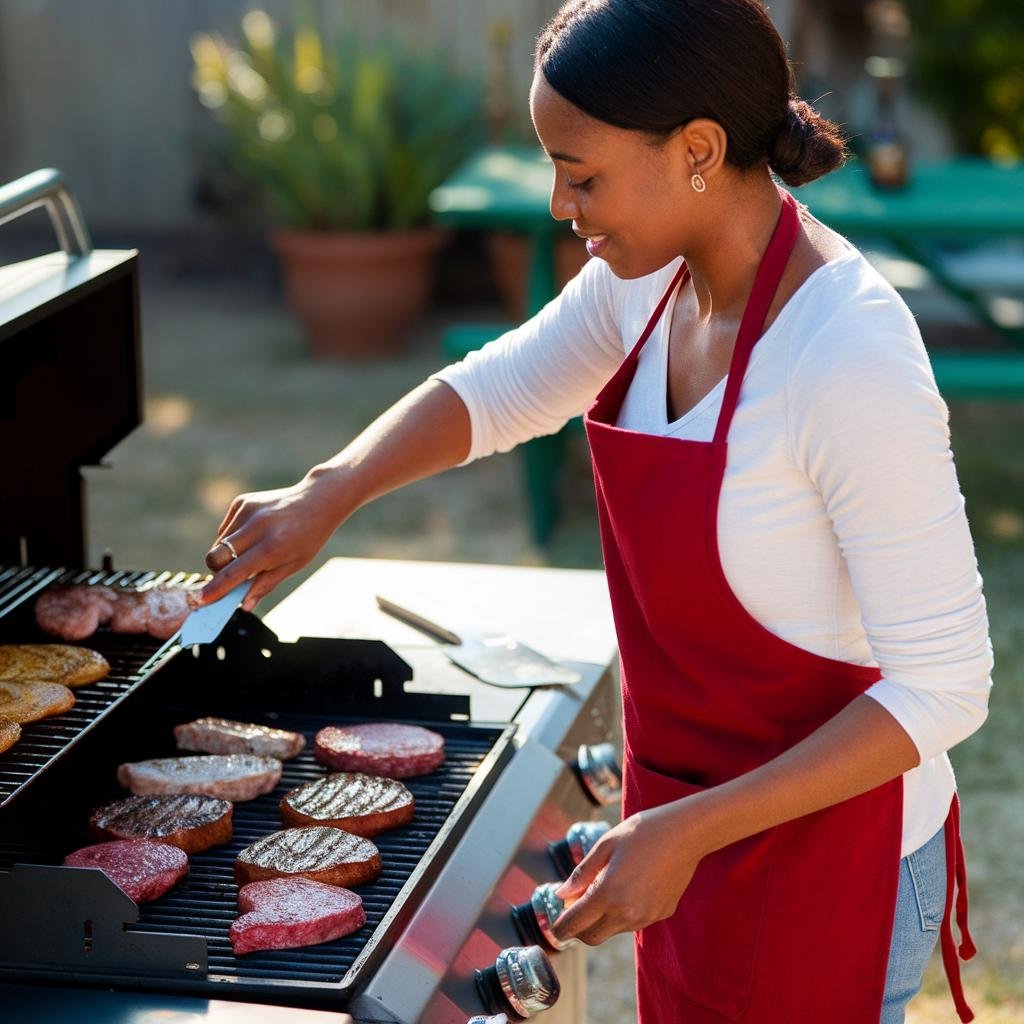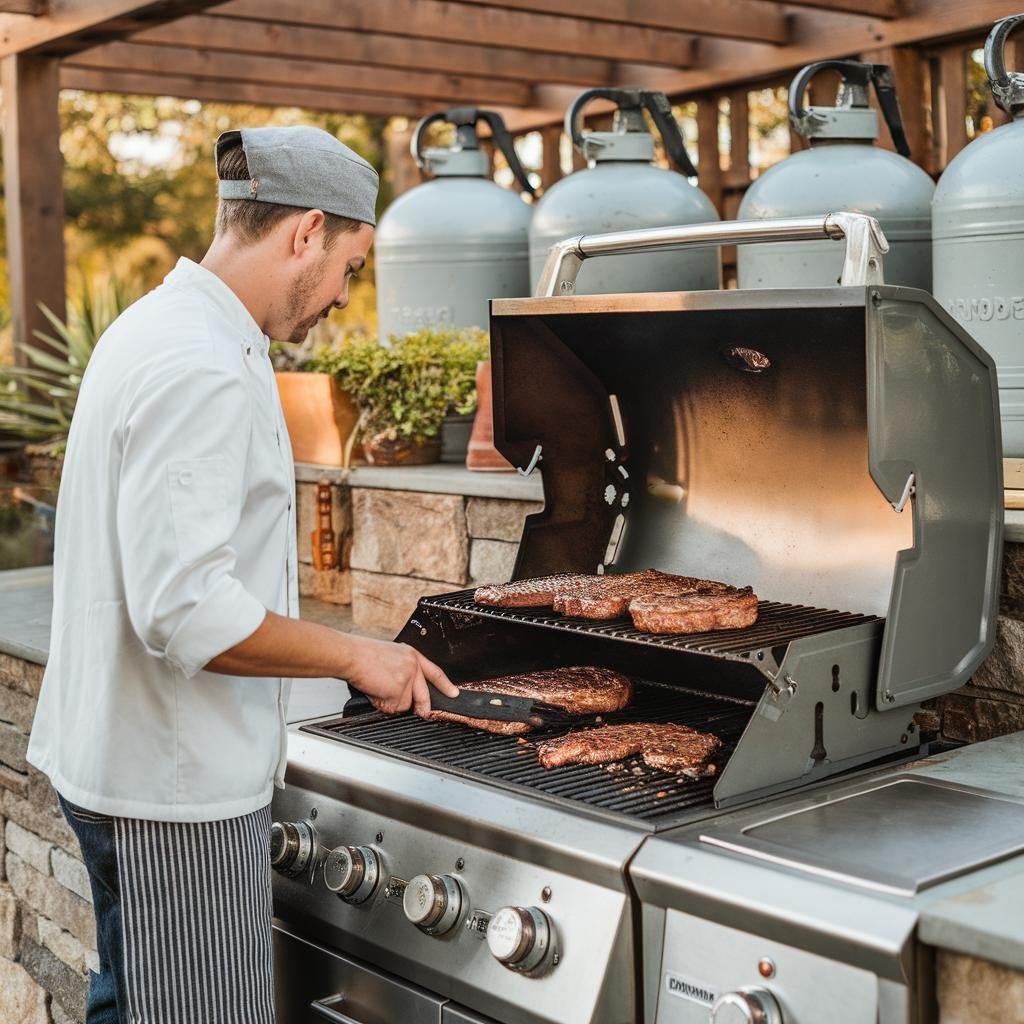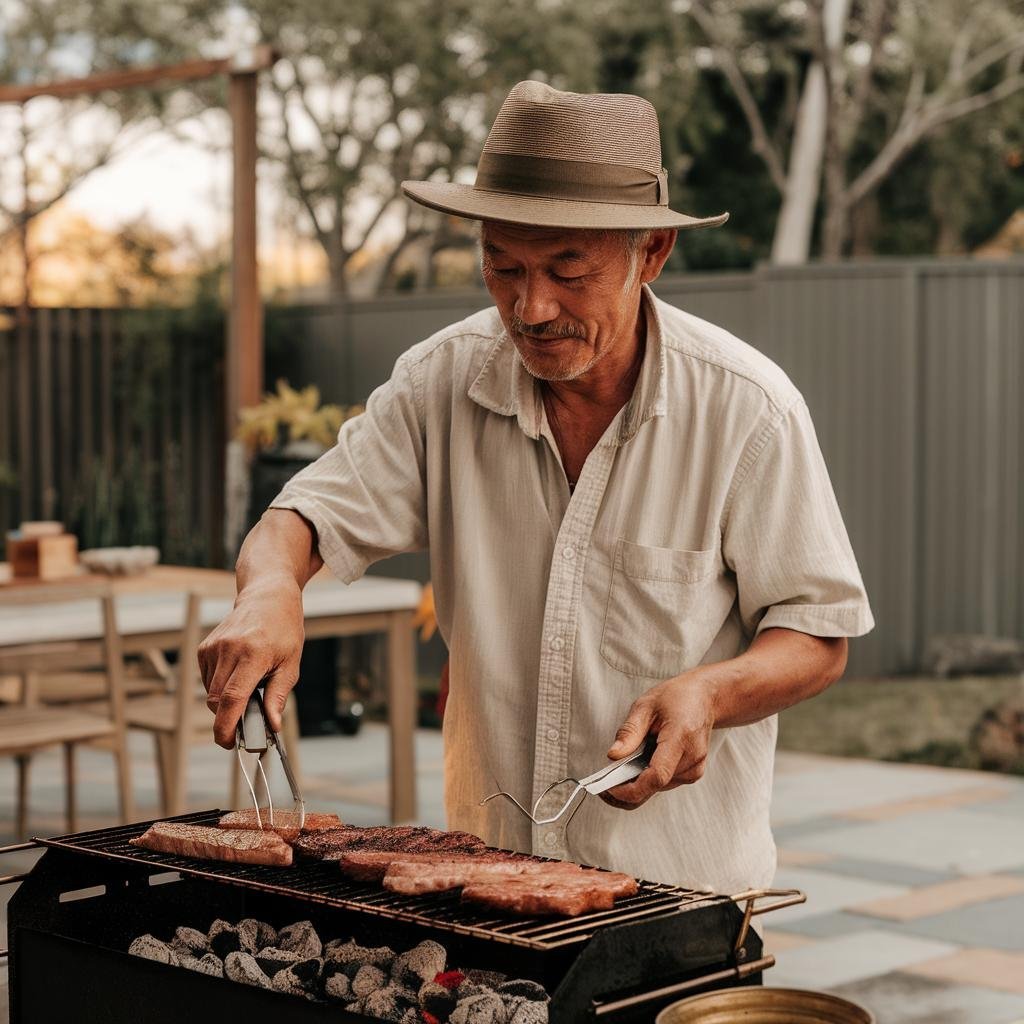Disclosure: This Post Contains Affiliate Links; We earn a commission on purchases.
Are you experiencing issues with your BBQ grill not heating up properly? Don’t let this setback ruin your outdoor cooking plans. There are a few common problems that may be causing your grill to have temperature issues. By troubleshooting these issues, you can quickly get your grill back up and running.
One of the most common reasons for a grill not heating up is a faulty temperature gauge. Your temperature gauge plays a crucial role in determining the cooking temperature, but it can sometimes provide inaccurate readings. Another possible cause is gas leaks from the regulator hose, which can prevent the grill from reaching the desired temperature. Additionally, an empty or near-empty propane tank and low flames produced by burners can also contribute to inadequate heating.
Fortunately, there are steps you can take to resolve these issues and ensure your grill heats up properly. By following some simple troubleshooting tips, you can get your BBQ grill working again in no time.
Key Takeaways:
- Check the accuracy of your temperature gauge to ensure it’s providing reliable readings.
- Inspect the regulator hose for any gas leaks and address them promptly.
- Monitor the level of propane in your tank and refill or replace it as needed.
- Examine the flames produced by the burners and make sure they are strong and consistent.
- Perform regular maintenance on your grill to prevent future heating issues.
Common Reasons for a Gas Grill Only Heating Up to 200-300 Degrees
Many gas grill owners may encounter the frustrating issue of their grill not reaching the desired cooking temperature. It is common for gas grills to only heat up to around 200-300 degrees, which is significantly lower than their usual operating temperature. This can result in food taking longer to cook or not being cooked thoroughly.
To resolve this problem and get your gas grill back to its optimal heating capabilities, it is important to identify and address the underlying issues. There are several common reasons for a gas grill only heating up to 200-300 degrees:
- A faulty temperature gauge could be providing inaccurate readings, causing you to believe the grill is reaching its full heat when it is not. This can be easily checked by using an alternative temperature measuring method, such as a thermometer probe placed near the food.
- Gas leaks from the regulator hose can disrupt the flow of gas to the burners, resulting in low flame production and inadequate heating. A simple soapy solution can help you identify any gas leaks, as bubbles will form when applied to the gas tank valve, hose, and regulator.
- An empty or near-empty propane tank can also be a reason for low grill temperature. Checking the gas level in the propane tank can be done by pouring hot water on the side of the tank and feeling for a cold sensation where propane gas is present. If the tank feels mostly cold, there is still a sufficient amount of propane. If it feels hot or shows no temperature variation, it is time to replace or refill the tank.
- Low flames produced by burners can result in inadequate heat reaching the cooking surface. This can occur due to blockages in the burner holes or a faulty gas grill regulator. Cleaning the burners and ensuring there are no blockages can help improve flame production, while replacing a faulty regulator may be necessary.
By addressing these common issues, you can restore your gas grill’s heating capabilities and ensure your food is cooked to perfection. Now, let’s take a closer look at each of these reasons and learn how to troubleshoot and resolve them:
1. Faulty Temperature Gauge
One common reason for a gas grill only heating up to 200-300 degrees is a faulty temperature gauge. The temperature gauge provides a reading of the grill’s internal temperature, allowing you to monitor and adjust it accordingly. However, some temperature gauges may provide inaccurate readings, making it difficult to determine the actual heat produced by the grill. This can result in undercooked or overcooked food.
If you suspect a faulty temperature gauge, you can verify its accuracy by using an alternative temperature measuring method. For example, placing a thermometer probe near the food can give you a more accurate temperature reading. If the thermometer probe shows a significantly different temperature from the gauge, it may be time to replace the temperature gauge.
2. Gas Leaks from the Regulator Hose
Gas leaks from the regulator hose can significantly impact the grill’s heating capabilities. A gas leak disrupts the flow of gas to the burners, resulting in low flame production and inadequate heat. To check for gas leaks, create a soapy solution by mixing water and dish soap. Apply the solution to the gas tank valve, hose connections, and regulator. If you see any bubbles forming, it indicates a gas leak.
If you find a gas leak, turn off the valve on the propane tank immediately and address the issue before using the grill again. Contacting a professional or replacing the regulator hose is recommended to ensure safe and efficient operation of your gas grill.
3. Empty or Near-Empty Propane Tank
If your gas grill is only heating up to 200-300 degrees, it might be due to an empty or near-empty propane tank. Propane is the fuel that powers your grill, and when the tank is running low, it can result in decreased heating power. Checking the gas level in the tank is essential to determine whether it needs to be refilled or replaced.
To check the gas level, pour hot water on the side of the propane tank and feel for a cold sensation. The cold area indicates where the propane gas is present. If you feel mostly cold, there is still enough propane in the tank. However, if there is no temperature variation or the tank feels hot, it is time to refill or replace it.
4. Low Flames Produced by Burners
Low flames produced by the burners can lead to a gas grill only heating up to 200-300 degrees. This can be attributed to blockages in the burner holes or a faulty gas grill regulator. Blockages in the burner holes can restrict the flow of gas, resulting in weak flames and inadequate heating. Cleaning the burners regularly can help maintain proper flame production and heat distribution.
If cleaning the burners does not improve flame production, it is worth checking the gas grill regulator. The regulator controls the gas flow from the propane tank to the burners. Signs of a faulty regulator include popping noises, weak orange or yellow flames, heavy soot deposits on the burners, or flames spilling out of the burners. If any of these signs are present, resetting the regulator might resolve the issue. However, if the problem persists, it may be necessary to replace the regulator or seek professional assistance.
By addressing these common causes for a gas grill only heating up to 200-300 degrees, you can ensure your grill reaches its optimal cooking temperature. Now, let’s move on to Section 3 to learn more about troubleshooting a faulty temperature gauge.
Grill Not Hot Enough? Check That Your Temperature Gauge Is Working Properly
The temperature gauge on your grill is a crucial component for achieving perfectly cooked meals. However, some grill models may have temperature gauges that provide inaccurate readings, leading to subpar results. One common reason for inaccurate readings is the positioning of the gauge, which is often placed far from the food being cooked and closer to the cooler outside air.
To ensure accurate temperature readings and prevent disappointments in your grilling endeavors, consider the following solutions:
- Prop up a thermometer probe near the food: By placing a thermometer probe directly near the food you’re cooking, you can get a more precise reading of its internal temperature. This method is especially useful for larger cuts of meat or dishes that require specific temperature ranges.
- Use a thermocouple for precise measurements: A thermocouple is a device that accurately measures temperature. It can be used in conjunction with your grill’s built-in temperature gauge to ensure consistency and reliability in your cooking.
If you continue to experience temperature discrepancies even after implementing these methods, it may indicate a faulty temperature gauge. In such cases, it is recommended to replace the temperature gauge with a new one that provides accurate readings.
“Having an accurate temperature gauge is essential for achieving the perfect grill marks and cooking temperatures. Don’t let a faulty gauge ruin your culinary creations!”
To help you better understand the importance of a working temperature gauge, and to guide you in making an informed decision about replacing it, here’s some additional information:
Benefits of a Reliable Temperature Gauge:
| Advantages | Consequences of Inaccuracy |
|---|---|
| 1. Precise cooking control | 1. Undercooked or overcooked food |
| 2. Consistent grilling results | 2. Inconsistent texture and flavor |
| 3. Prevents foodborne illnesses | 3. Health risks due to undercooking |
Having a functional and reliable temperature gauge ensures that your food cooks thoroughly, achieving optimal taste, texture, and safety. Don’t take chances with an inaccurate reading; replace your faulty temperature gauge to unleash your grilling prowess.
Grill Not Hot Enough? Check Your Grill’s Regulator Hose
Gas leaks can be a culprit when your grill fails to reach the desired temperature. To identify gas leaks, a simple soapy solution is all you need. Apply the solution to the gas tank valve, hose, and regulator, and if any bubbles form, it indicates the presence of a gas leak. When this happens, it is crucial to immediately close the valve and address the issue by contacting a professional or replacing the hose.
Properly connecting the regulator hose and ensuring it is not damaged can significantly prevent gas leaks and ensure your grill’s heating efficiency. Regular inspection and maintenance of the regulator hose will help you enjoy a safe and optimal grilling experience.
Key Takeaways:
- To check for gas leaks, apply a soapy solution to the gas tank valve, hose, and regulator.
- If bubbles form, it indicates the presence of a gas leak.
- Close the valve immediately and seek professional help or replace the hose.
- Properly connecting and maintaining the regulator hose is essential for efficient gas flow and heating.
| Signs of Gas Leaks | |
|---|---|
| 1 | Smell of gas near the grill |
| 2 | Hissing sound |
| 3 | Inconsistent or weak flame |
| 4 | Sudden drop in grilling temperature |
| 5 | Bubbles forming when applying a soapy solution to the gas connections |
Grill Not Hot Enough? It Might Be Time to Replace Your Propane Tank
A near-empty or empty propane tank can cause your grill to not heat up adequately, leaving you with undercooked food and a frustrating grilling experience. To ensure your propane tank is not the culprit behind your grill’s lack of heat, it’s essential to check the gas level and be aware of the signs indicating the need for a replacement.
Checking Propane Levels
One way to determine the gas level in your propane tank is by using a hot water test. Simply pour hot water on the side of the tank and feel for a cold sensation. If the tank feels mostly cold, it indicates there is still a sufficient amount of propane gas. However, if the tank feels hot or there is no temperature variation, it’s a clear sign that it’s time to refill or replace the propane tank.
Handling Propane Tanks with Caution
When dealing with propane tanks, it’s crucial to exercise caution and prioritize safety. If you notice a gas smell near your grill or propane tank, it could be an indication of a gas leak. In such cases, it’s essential to take immediate action by closing the valve and addressing the issue promptly. Always follow the proper guidelines for handling and storing propane tanks to minimize the risk of accidents and ensure your grilling experience remains safe and enjoyable.
Replacing your propane tank when it’s low or empty is a simple yet effective solution to ensure your grill reaches the desired heat levels. By doing so, you can enjoy optimal grilling results and savor perfectly cooked meals every time.
Low Flames? Check Your Gas Grill’s Regulator
When it comes to grilling, having low flames can be extremely frustrating. Not only does it impact the cooking process, but it can also lead to undercooked or unevenly cooked food. If you’re experiencing low flames on your gas grill, the first thing you should check is the gas grill regulator.
The gas grill regulator plays a crucial role in controlling the flow of gas from the propane tank to the burners. It ensures a steady and consistent gas flow, which directly affects the size and intensity of the flames. However, a faulty gas grill regulator can disrupt this flow, resulting in low flames and a decrease in grilling performance.
There are several signs that indicate a faulty gas grill regulator. Pay attention to popping noises, weak orange or yellow flames, heavy soot deposits on the burners, and flames spilling out of the burners. These are clear indicators that the regulator may not be functioning properly.
If you suspect that your gas grill regulator is faulty, there are a few steps you can take to resolve the issue. Start by resetting the regulator. To do this, simply turn off the gas supply, disconnect the regulator from the propane tank, wait for a few minutes, and then reconnect it. This can help reset the internal components and restore proper gas flow.
If resetting the regulator doesn’t solve the problem, it may be necessary to replace the faulty regulator. You can find compatible regulators from your grill’s manufacturer or authorized retailers. It’s important to choose a regulator that matches the specifications of your grill to ensure proper functionality and safety.
Alternatively, if the problem persists even after replacing the gas grill regulator, it may be time to consider replacing the entire gas grill. While this may seem like a drastic measure, it can provide a long-term solution to your low flame issues.
Remember, ensuring a steady gas flow is crucial for achieving optimal grilling results. Regularly check your gas grill’s regulator for any signs of damage or malfunction. By addressing these gas flow issues, you can enjoy consistent and high-quality flames during your grilling sessions.
| Signs of a Faulty Gas Grill Regulator | Possible Solutions |
|---|---|
| Popping noises | Resetting the regulator |
| Weak orange or yellow flames | Replacing the faulty regulator |
| Heavy soot deposits on burners | Replacing the entire gas grill |
| Flames spilling out of burners |
Conclusion
Troubleshooting and fixing heating issues in a gas grill is crucial for achieving optimal cooking results. By addressing common problems like faulty temperature gauges, gas leaks, low propane levels, and regulator malfunctions, you can ensure that your grill heats up properly. Regular maintenance, which includes cleaning burners and checking for blockages, is also essential for improving grill performance.
Remember, safety should always be a priority. Promptly address any gas leaks or damage to the grill components to prevent accidents and maintain a safe grilling experience. By following these troubleshooting tips and practicing regular gas grill maintenance, you can enjoy delicious grilled meals without any heating issues.
So, the next time your gas grill isn’t heating up as it should, take a moment to identify the problem and apply the necessary fixes. With a little troubleshooting and proper maintenance, you’ll be back to grilling perfection in no time!
References

Ryan Conlon is a BBQ enthusiast and inspired chef on a journey through the smoky, savory world of outdoor cooking. Hailing from the heart of the Midwest, Ryan’s passion for grilling ignited during his early years, where family gatherings often revolved around the sizzle of the grill and the aroma of seasoned meats.


